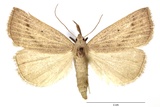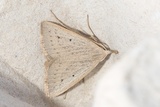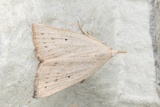Macrochilo cribrumalis (Hübner, 1793) Species
Last modified: Nov. 12, 2025, 6:44 p.m.
A fairly common species in Belgium, more observed in the northern part.
This species is considered Least Concern according to the IUCN Red List category for Flanders 2023.
Details
- Classification
- Family: Erebidae > Subfamily: Herminiinae > Genus: Macrochilo > Species: Macrochilo cribrumalis
- Vernacular names
- Stippelsnuituil (NL), Dotted Fan-foot (EN), L'Herminie pointillée (FR), Sumpfgras-Spannereule (DE)
- First mention in Belgium
- Derenne F. 1934b. Espèces nouvelles pour la faune belge (suite). — Lambillionea 34: 222–223. On page 222.
- Status
-
Native
Distribution
Bionomics
Hibernates as a part-grown larva in tussocks of vegetation and pupates in a cocoon at ground level among plant debris. The adults are active at dusk and later come to light and sugar.
No pictures yet!
Flight periods
The adults fly in one generation a year onwards from late May till late August.
Observed on
- Host plant (species):
- Carex sylvatica
- Substrates:
- Grasses
The larva lives mainly on Carex but also on other grasses.
No pictures yet!





